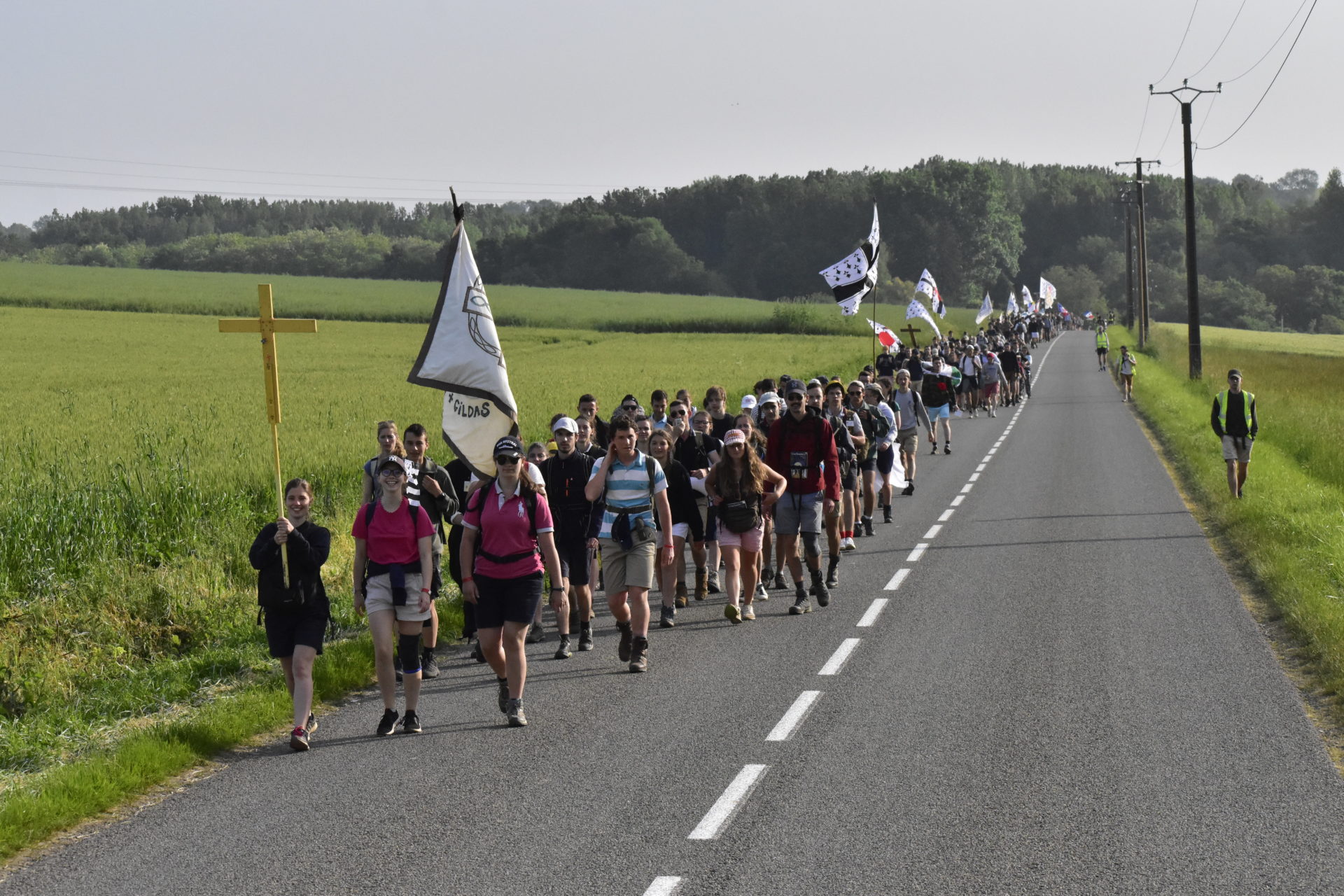According the Holy See Press Office, here are the details of the funeral of Pope Francis:
The 88-year-old pontiff had been well aware of his fragile state, especially in view of his recent illness. As early as 2015, Pope Francis had expressed the desire to be buried in the Basilica of Saint Mary Major (Santa Maria Maggiore), a fifth-century church in Rome dedicated to the Blessed Virgin Mary. He was so devoted to Mary and her basilica that after each of his more than 100 trips abroad, he would visit it after returning to Rome to pray and meditate.
No pope has been buried in Saint Mary Major since the 17th century, when Pope Clement IX was laid to rest there.
The funeral rites take place in three parts, called stations:
The first Station: certifying the death
This takes place in the pope’s private chapel, after medical professionals have certified his death. Until recently, this stage had taken place at the pope’s bedside.
After the body lies in rest in the chapel, the cardinal serving as the pope’s Camerlengo — the pope’s chief of staff — will make the arrangements for the funeral. He is also tasked with running the Vatican until a new pope is elected. The current Camerlengo is Cardinal Kevin Joseph Farrell, appointed by Francis in 2019.
As has been done for centuries, the Camerlengo will formally call the deceased pope by the full name given to him when he was baptized as an infant — Jorge Mario Bergoglio.
Another ancient rite will also take place after the declaration of the pope’s death: the defacing of the pope’s ring. Each pope wears a custom-made ring with an engraved image of a man fishing from a boat, hearkening back to the gospel of Matthew, where Jesus calls St. Peter a “fisher of men.” This Fisherman’s Ring, with the name of the current pope engraved over the image, could act as a seal on official documents. The Camerlengo will break Francis’ ring and smash the seal with a hammer or other instrument to prevent any other person from using it.
The pope’s apartments will also be locked, with no one allowed to enter; traditionally, this was done to prevent looting.
Translation of the body of Pope Francis: Cardinal Kevin Farrell, Camerlengo of the Holy Catholic Church, presided over the rite of translation of the body of Pope Francis on April 23, which began at 9:00 AM with a moment of prayer. The procession then passed through Santa Marta Square and the Square of the Roman Protomartyrs and exited through the Arch of the Bells into Saint Peter’s Square and enterd Saint Peter’s Basilica through the central door.
The Second station: Viewing the body
The deceased pope will be dressed in his simple white cassock and red vestments, then placed in a simple wooden coffin. While previous pontiffs, including the late Pope Benedict, have been buried in the traditional triple coffins made of cypress, lead and oak, Francis instead chose a simple wooden coffin lined with zinc. This will be carried in procession to Saint Peter’s Basilica, where the public viewing will take place for the next three days.
Saint Peter’s Basilica will remain open for the faithful who wish to pay their respects to the late Pope on Wednesday April 23 from 11:00 AM to midnight; on Thursday April 24 from 7:00 AM to midnight; and on Friday April 25 from 7:00 AM to 7:00 PM.
The pope’s body will be left in the plain, open casket during this viewing period in order to emphasize the pope’s humble role as a pastor, not a head of state. The earlier practice would have been to place the body on top of a tall raised platform, called a catafalque; this ended with the funeral of Pope Benedict XVI in 2022.
At Francis’ funeral, after the public viewing, a plain white cloth will be placed over the pope’s face as he lies in the oak coffin, a continuing part of papal funerals.
Pope Francis’ coffin to be sealed in rite on Friday evening.
Pope Francis’ coffin will be sealed during a liturgical rite held in St. Peter’s Basilica on Friday, April 25, at 8:00 PM.
Cardinal Kevin Farrell, Camerlengo of the Holy Roman Church, will preside at the Rite of Sealing of the Coffin of the late Pope Francis, ahead of the papal funeral on Saturday morning. The liturgical rite will be attended by several Cardinals and Holy See officials.
This will mark the end of public viewing in St. Peter’s Basilica, which has seen tens of thousands of people pay their respects to the late Pope.
As his mortal remains lie in state, over 50,000 people have filed past the Altar of the Confession in the 24 hours since the Vatican Basilica opened to the faithful on Wednesday morning.
St. Peter’s Basilica remained open until 5:30 AM on Thursday, closing for an hour and a half before reopening at 7:00 AM.
At the Altar of the Confession, the Cardinal Camerlengo presided over the Liturgy of the Word, at the conclusion of which the visits to the body of the Roman Pontiff commenced.
The coffin was sealed during the Rite of Sealing of the Coffin on Friday, April 25.
According to the Vatican News Service, The Office for the Liturgical Celebrations requested the presence of Cardinals Giovanni Battista Re, Pietro Parolin, Roger Mahony, Domenique Mamberti, Mauro Gambetti, Baldassare Reina, and Konrad Krajewski for the Rite of Sealing of the Coffin.
Those assisting the Rite also included Archbishop Edgar Peña Parra, Archbishop Ilson de Jesus Montanari, Monsignor Leonardo Sapienza, the Canons of the Vatican Chapter, the Ordinary Minor Penitentiaries of the Vatican, the late Pope’s secretaries, and others admitted by the Master of Pontifical Liturgical Celebrations, Archbishop Diego Ravelli.
The Funeral of Pope Francis:
The funeral Mass was celebrated on Saturday April 26 in front Saint Peter’s Basilica. It was earlier thought that it would be inside due to cold weather, but with highs around 70°F (21°C) and there will likely be a large number of people assembled on the plaza.
Masses will continue to be said in Francis’ memory for nine days after his death — a period called the Novendialis. This ritual was inspired by an ancient Roman tradition prescribing a mourning period ending on the ninth day after a death. The Novemdiales Masses will be held each day at 5:00 PM (GMT +2) in St. Peter’s Basilica, except for the Mass on Divine Mercy Sunday, April 27, which will take place at 10:30 AM in St. Peter’s Square.
Third station: Burial
Most popes are buried in the grottoes underneath Saint Peter’s, and since Pope Leo XIII’s burial at St. John Lateran in 1903, every pope has been buried at Saint Peter’s.
According to Francis’ wishes, as expressed in his last will and testament, his body was buried in the Basilica of Saint Mary Major,
After so many journeys from Rome to visit Catholic communities in countries across the globe, and so many visits to this basilica for prayer and meditation, It seems fitting that, at the end of his life’s journey, Francis would make one last trip to the church he loved so much to be laid to rest forever.
After a few final prayers and sprinkling of holy water, the coffin was placed in its final location inside the church. Only later will the area be opened to the public for prayers and veneration.
 The expedition traveled over 800 miles through unknown territory and finally came to the banks of El Rio Bravo (the Rio Grande River) almost exhausted.
The expedition traveled over 800 miles through unknown territory and finally came to the banks of El Rio Bravo (the Rio Grande River) almost exhausted.













